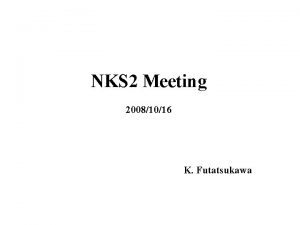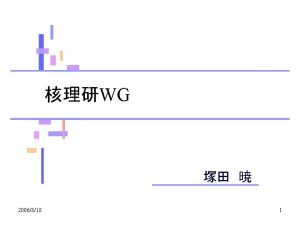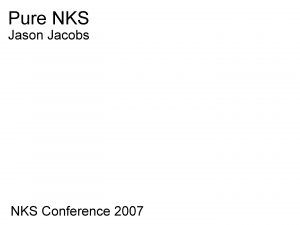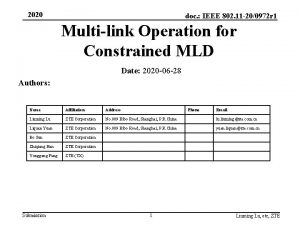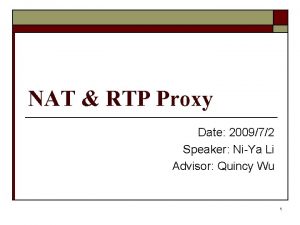DC Efficiency NKS 2 Meeting 200972 F Yamamoto









- Slides: 9

DC Efficiency NKS 2 Meeting 2009/7/2 F. Yamamoto

DC Efficiency of over Hit 2 The problem point in last week… Run#2802, 2803, 2820~2823 ・Efficiency of layer 9 and 10 goes up as compared with other Run#. Similarly, layer 11, 12, 13, 14, 15, and 16 goes down, but layer 17 and 18 does not. What does the cause of above? graph 1:Run 2800~2850

IH, OH multiplicity Here, we define as Run#2802, 2803, 2820~2830 → improper other Run# ~ → proper.

IH OH multiplicity I want to evaluate problem of improper. Therefore, I take the volume of peak of IH or OH multiplicity, and calculate the ratio of the volume of Bin Number to the volume of peak (=bin / max). I draw the histogram, where the horizontal axis is obtained the ratio, and the vertical axis is Run number. Bin Number is 1000. The range of horizontal axis is to 1 from 0. Peak = max Bin number 2 = bin I take proper →Run number is 35, improper →Run number is 6. Graph. 1 For example…

IH, OH multiplicity What do we understand? →I check that the statistics relation of proper to improper. A point of note… I see the histogram of proper put on the histogram of improper. The proper put on improper → No problem, but the improper problem is not solution. The proper doesn’t put on improper → perhaps the improper problem relate IH or OH. Fitting : Gaussian distribution Graph 2 : A point of note…

Result IHL OHVL OHHL Peak=bin number 1 Histogram 1 : Bin Number 1 IHR OHVR OHHR Peak=bin number 1

Result IHR IHL Peak=bin number 2 OHVL Peak=bin number 2 OHHL Histogram 2 : Bin Number 2 Peak=bin number 2 OHVR Peak=bin number 2 OHHR

Result IHL OHVL OHHL Histogram 3 : Bin Number 3 IHR OHVR OHHR

summary Notice ・ the histogram of improper is almost put on proper. ・I think that the distribution has a little width. Result I think may be… → No problem IH and OH. How do all think?










